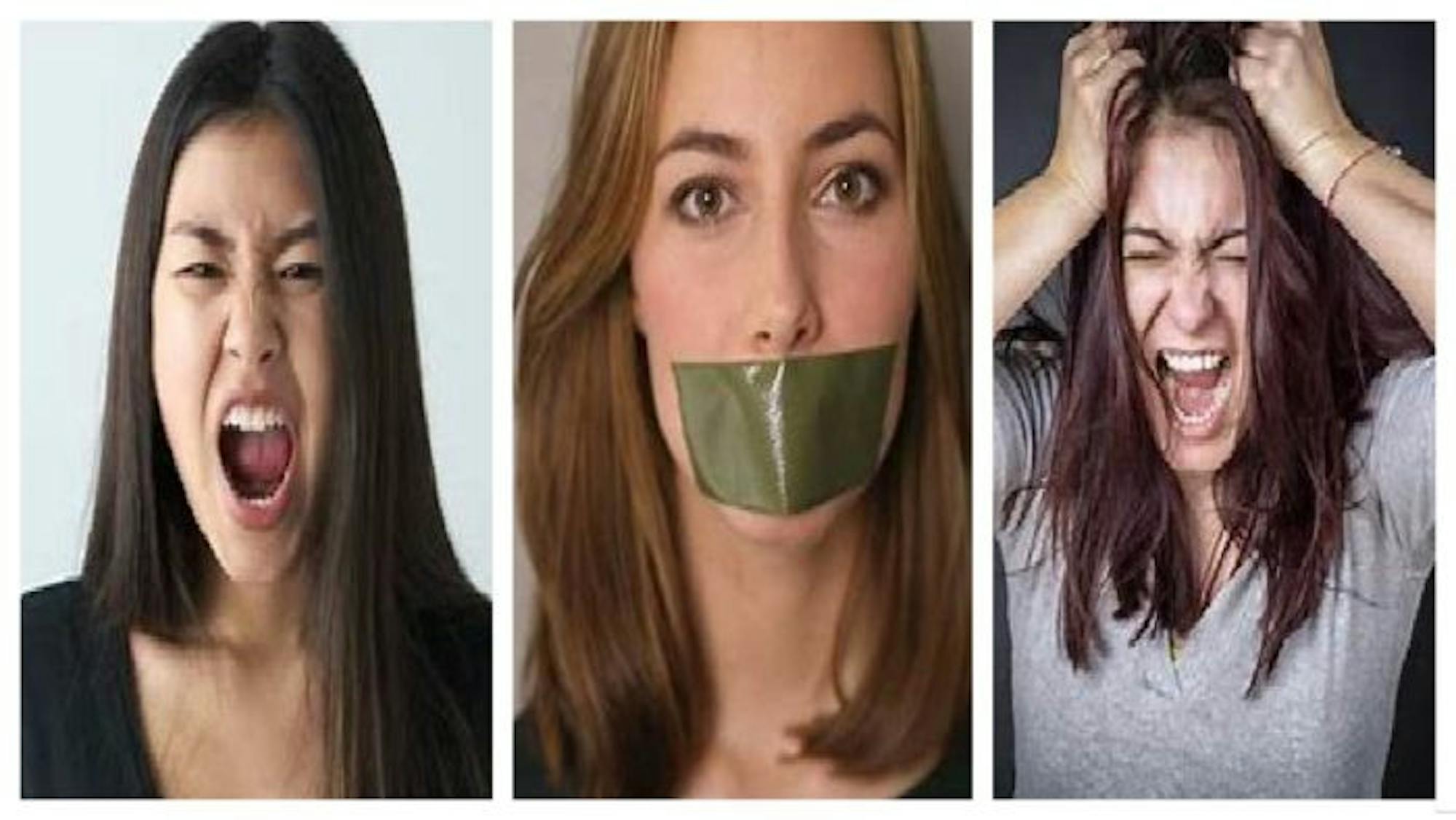
“When I dare to be powerful—to use my strength in the service of my vision—then it becomes less and less important whether I am afraid" –Audre Lorde
Silence — that is, to “prohibit or prevent from speaking” — is an action that has been directed toward women for centuries. Whitney Bradshaw’s “Outcry” gives this silence a voice. As I walked into the room housing this collection of photos — currently housed in the Moreau Center for the Arts at Saint Mary’s — I felt the presence of intense emotion. And for good reason: I was surrounded by dozens of screaming women.
Unable to ignore the palpably emotional atmosphere of the room, I wanted to learn more about the project. I began by reading Bradshaw’s statement on the collection, from which I learned that her motivation behind this project was fueled by “the long history of the silencing of womxn and girls” and the #MeToo movement. “Outcry” is a testament to the painful silencing of women and harnesses the true power of the feminine voice. As I viewed the photographs, I could almost feel the weight of the silence forced upon generations of women, held back for centuries, finally being released. It was as if my own feminine energy was tapped into and harnessed by these screaming women I don’t know.
Each photo I walked by told a different story. One minute I was celebrating the power of a beautiful woman who has been held back not only by her femininity, but by her origins as well. The next minute I was wiping the tears of a woman so clearly hurt by the burdens that society has placed on her. I thought of Bradshaw’s statement about her work: “I invite groups of womxn who don’t know one another to gather together ... providing support for one another as we bravely let out feelings that have been silenced or dismissed in our culture.” The intentionality behind these photos was present as I made my way, wall by wall, looking at a diverse group of faces contorted by intense feeling.
The photos in this collection are not all angry, however. There are grins, frowns, tears, goosebumps, expressions of pride and joy. I was faced with real, authentic femininity. Not a single woman I met was afraid; each scream harnessed its own original feminine energy. As I rounded the corner, I was surprised to see a wall full of masked women, their photos clearly taken during the COVID pandemic. This wall of masked women spoke to me in ways that I’m not sure I can even express. I could not help but think of the irony behind these images, as this project represents women who are tired of being silenced. There is no doubt that masks can separate us and silence us, but these women screaming behind pieces of cloth or plastic were so loud that I could almost hear the stifled screams where I was standing. Seeing these masked women — doubly silenced, if you will — spoke as a true testament to the purpose of Bradshaw’s project. These women will not be silenced. Not by men, not by masks, not by anything.
I found myself at the end of the collection when I saw, to the right of the masked women, three large photos standing out among the rest. The screams of these women were targeted, heard by Bradshaw and now by me, and they were beautiful. A special power came from the triad before me and, in an odd sense, I felt welcomed into this power.
I really did not want to leave this gallery, to leave the sound of a few women who represent thousands — probably millions — of women around the world. I felt surrounded by the fierce love only a female can produce.
Upon leaving, I was asked to me to share my experience via a piece of paper. I left with what I share with you now, but I also thought to myself, “I want every man who has ever hurt a woman to walk into this gallery and feel the screams.”













